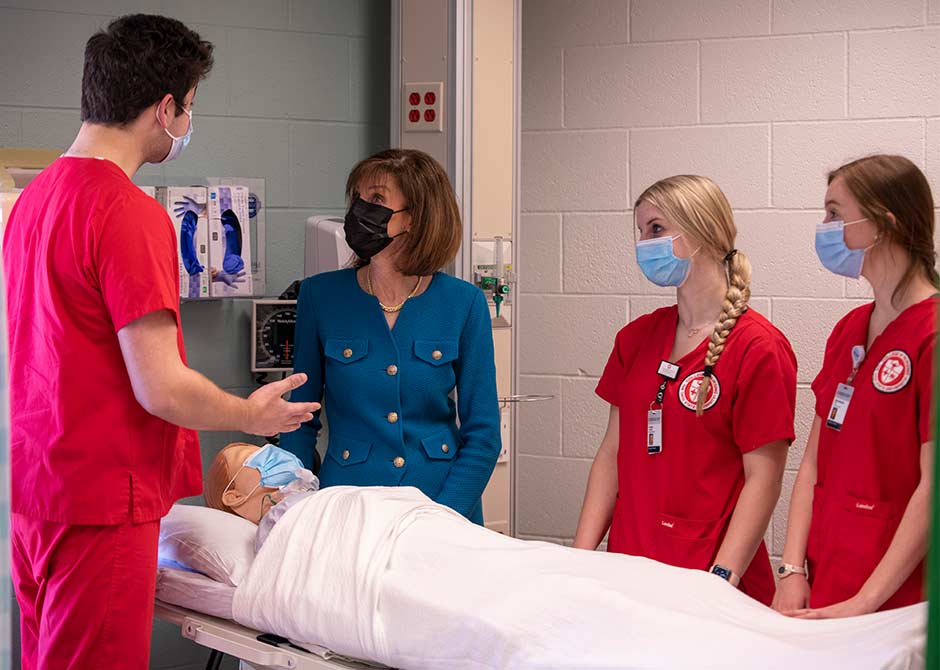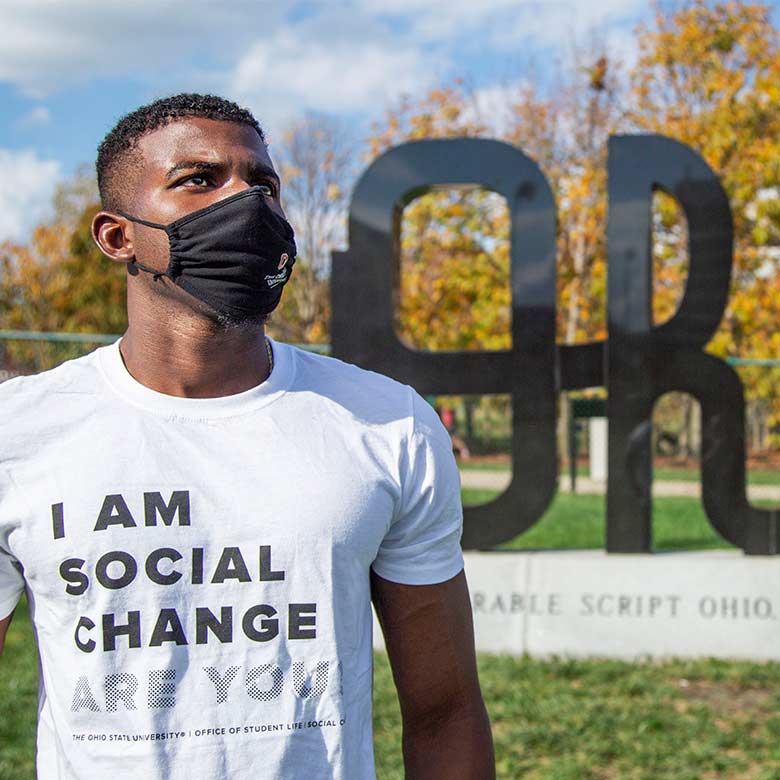
Medical schools around the country hold dear their responsibility of developing the next generation of medical professionals. What makes The Ohio State University College of Medicine unique is its close proximity to six other top-ranked health science colleges and a nationally renowned
School of Health and Rehabilitation Sciences (external link), delivering a robust interprofessional education that few others can match.
“Our medical students learn alongside health care professional students as early as their first year,” says Daniel Clinchot, MD, professor emeritus in the Department of Biomedical Education and Anatomy. “Interprofessional education is woven into our curriculum at our college because we believe these learning experiences better prepare our students to face challenges as part of a health care team during their residency, and because of that, provide better patient care.”
Leading a new chapter
In July 2020,
Andrea Pfeifle, EdD, PT, FNAP (external link) became The Ohio State University’s first associate vice chancellor for Interprofessional Practice and Education (IPE), serving all seven of Ohio State’s health science colleges to establish and advance a culture of interprofessional collaboration among all health disciplines.
“Medical school graduates from Ohio State get a deep understanding of the role of pharmacists, therapists, nurses, public health experts, dentists, optometrists and even veterinary ,” she says. “They better know how to work with and coordinate a team of health care professionals because it’s part of their education.”
“Ohio State’s growing health sciences IPE program is part of the College of Medicine’s commitment to optimizing each student’s education,” says Dr. Clinchot. “We’re producing more compassionate medical care providers who are better able to communicate and are thoroughly prepared to serve the diverse, changing needs of 21st century patients and communities.”
Another unique element is that the program bridges health care education to health care delivery, branching out across the university and into the community–with a focus on reducing health care disparities.
Better together
“When our student learner groups enter the community, they’re important resources to providing care, and they’re gaining valuable experience,” Dr. Pfeifle says. “They’re learning while meeting community needs that would otherwise go unmet.”
Interprofessional Community Scholars, a 12-week immersive community-based program, places health science students in teams of three or four, overseen by a resident in Ohio State’s
Department of Family and Community Medicine (external link).
Each team works with a resident from the Near East Side, an inner-city Columbus neighborhood plagued with devastating decline and wage, household income and health disparities. Residents are referred to as “community health mentors” and each play a role in teaching students to become better care providers.
The teams help improve the community health mentor’s digital literacy skills, providing them with an iPad, broadband internet and telehealth services as well as connections to other local services they may need to achieve their individual health goals. That includes teaching them how to use Ohio State’s online patient portal MyChart to communicate with their health care providers, finding them a primary care provider if they don’t have one and enrolling them in Medicaid if needed.
“Though still young, the initiative has sparked enthusiasm throughout the university and surrounding community. Interested Near East Side residents, for example, have more than filled the roster of patients Interprofessional Community Scholars can partner with at the moment,” Dr. Pfeifle says.
She and program participants are excited to embark on these new, long-term partnerships that give students more multidisciplinary skills with a diverse patient population.
“Health science students learn from the community they’re serving while they’re working, and what we have in the end is more than just curriculum — it’s a collaboration with the community,” she says.
A new path forward
Launched this year is the new “BuckIPE” program that combines interprofessional education experiences with extracurricular chances to serve and learn in the community.
Through BuckIPE, Ohio State health science students are assigned to teams of eight and stay with that team throughout their education. The teams each include at least one College of Medicine student in addition to students representing the colleges of
Dentistry (external link),
Nursing (external link),
Optometry (external link),
Pharmacy (external link),
Public Health (external link),
Veterinary Medicine (external link) and Arts and Sciences (in
speech and language pathology (external link)).
“Together, these students will move through a series of planned, developmentally appropriate modules throughout their curriculum, along with extracurricular opportunities,” Dr. Pfeifle says. “In January, we added community service to their program, giving them a chance to practice applied learning within an authentic population setting.”
Other new initiatives include an interprofessional program to help patients with heart failure avoid unnecessary hospital admissions through thoughtful preventive measures, more frequent interactions with providers, early intervention, better patient education and at-home monitoring. Ohio’s Care Innovation and Community Improvement Program funds the initiative.
“Right now, the health care industry as a whole has a tendency to work in the silos of their disciplines,” she says. “When we better distribute the workforce, we can improve services, access to those services and the volume of care available.
“Health equity is dependent on this care model being implemented broadly — not just in areas of underserved populations, but for everyone — where professionals are working as a team and at the top of their license.”

 Medical schools around the country hold dear their responsibility of developing the next generation of medical professionals. What makes The Ohio State University College of Medicine unique is its close proximity to six other top-ranked health science colleges and a nationally renowned School of Health and Rehabilitation Sciences (external link), delivering a robust interprofessional education that few others can match.
Medical schools around the country hold dear their responsibility of developing the next generation of medical professionals. What makes The Ohio State University College of Medicine unique is its close proximity to six other top-ranked health science colleges and a nationally renowned School of Health and Rehabilitation Sciences (external link), delivering a robust interprofessional education that few others can match.